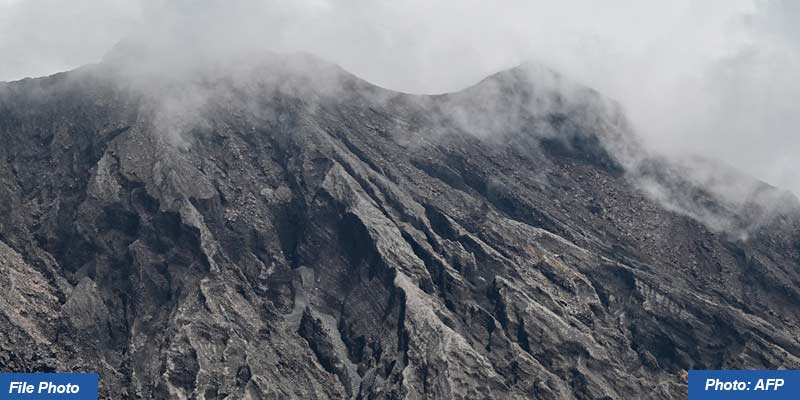- World
- Nov 17
Japan’s Sakurajima volcano erupts
• A volcano on Japan’s major western island of Kyushu erupted multiple times on November 16, sending a plume of smoke and ash as high as 4.4 kilometres into the air and causing dozens of flight cancellations.
• Sakurajima volcano is located on the southern tip of Kyushu near the city of Kagoshima.
• Local media also reported 30 flights in and out of Kagoshima Airport were cancelled because of ashfall and related reasons.
• The Japanese Meteorological Agency (JMA) said volcanic ash drifted northeast following the latest eruption and that it expected ash to fall in Kagoshima as well as nearby Miyazaki Prefecture.
• Sakurajima is one of Japan’s most active volcanoes and eruptions of varying levels take place on a regular basis.
• In 2019 it spewed ash as high as 5.5 km.
What is a volcano?
• Volcanoes are openings, or vents where lava, tephra (small rocks), and steam erupt onto the Earth’s surface. Many mountains form by folding, faulting, uplift, and erosion of the Earth’s crust.
• Volcanic terrain, however, is built by the slow accumulation of erupted lava. The vent may be visible as a small bowl shaped depression at the summit of a cone or shield-shaped mountain.
• Through a series of cracks within and beneath the volcano, the vent connects to one or more linked storage areas of molten or partially molten rock (magma). This connection to fresh magma allows the volcano to erupt over and over again in the same location.
• In this way, the volcano grows ever larger, until it is no longer stable. Pieces of the volcano collapse as rock falls or as landslides.
• A volcano is active if it is erupting lava, releasing gas or generating seismic activity. A volcano is labelled dormant if it has not erupted for a long time but could erupt again in the future. When a volcano has been dormant for more than 10,000 years, it is considered extinct. Volcanoes can remain inactive, or dormant, for hundreds or thousands of years before erupting again.
• The United States Geological Survey reports that there are about 1,350 potentially active volcanoes worldwide, aside from the continuous belts of volcanoes on the ocean floor at spreading centers like the Mid-Atlantic Ridge. About 500 of those 1,350 volcanoes have erupted in historical time. Many of those are located along the Pacific Rim in what is known as the “Ring of Fire”.
How do volcanoes erupt?
• Molten rock below the surface of the Earth that rises in volcanic vents is known as magma, but after it erupts from a volcano it is called lava. Magma is made of molten rock, crystals, and dissolved gas.
• The molten rock is made of the chemicals oxygen, silicon, aluminum, iron, magnesium, calcium, sodium, potassium, titanium, and manganese. After cooling, liquid magma may form crystals of various minerals until it becomes completely solid and forms an igneous or magmatic rock.
• Originating many tens of kilometres beneath the ground, magma is lighter than surrounding solid rock. It is driven towards Earth’s surface by buoyancy, it is lighter than the surrounding rock, and by pressure from gas within it. Magma forces its way upward and may ultimately break though weak areas in the Earth’s crust. If so, an eruption begins.
• Magma can be erupted in a variety of ways. Sometimes molten rock simply pours from the vent as fluid lava flows. It can also shoot violently into the air as dense clouds of rock shards (tephra) and gas.
• Larger fragments fall back around the vent, and clouds of tephra may move down the slope of the volcano under the force of gravity. Ash, tiny pieces of tephra the thickness of a strand of hair, may be carried by the wind only to fall to the ground many miles away. The smallest ash particles may be erupted miles into the sky and carried many times around the world by winds high in the atmosphere before they fall to the ground.
• Some dangers from volcanoes can be predicted ahead of time while others may occur with little or no notice after an eruption. Each volcano and situation is unique.

